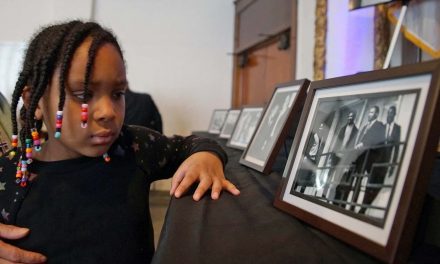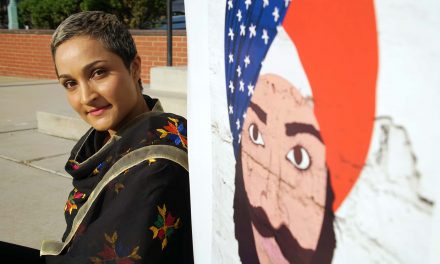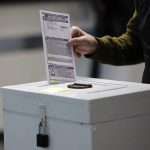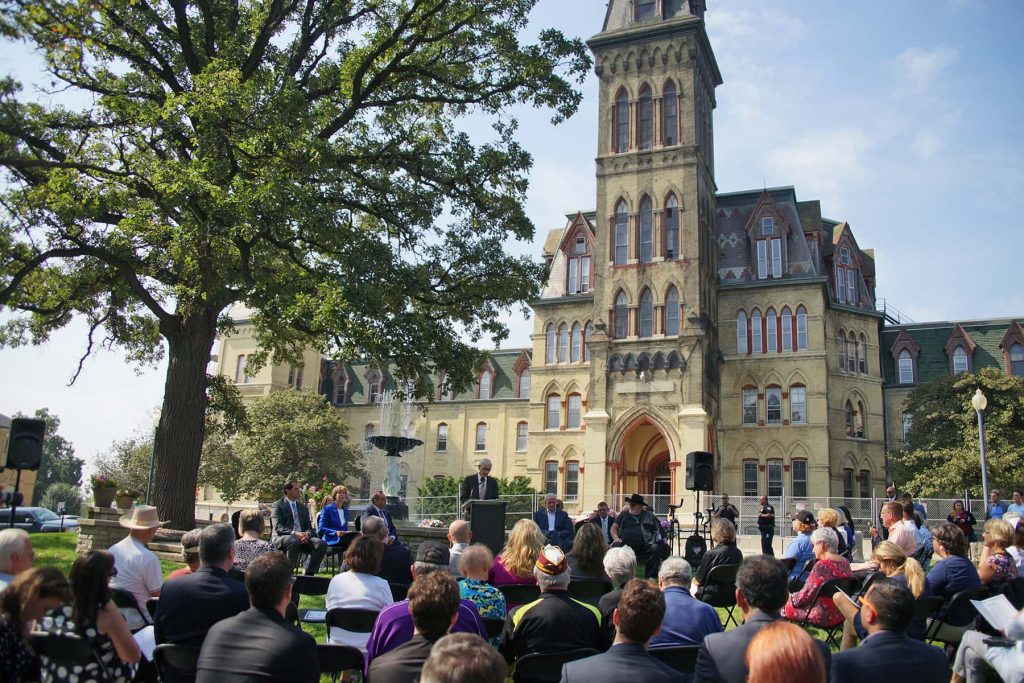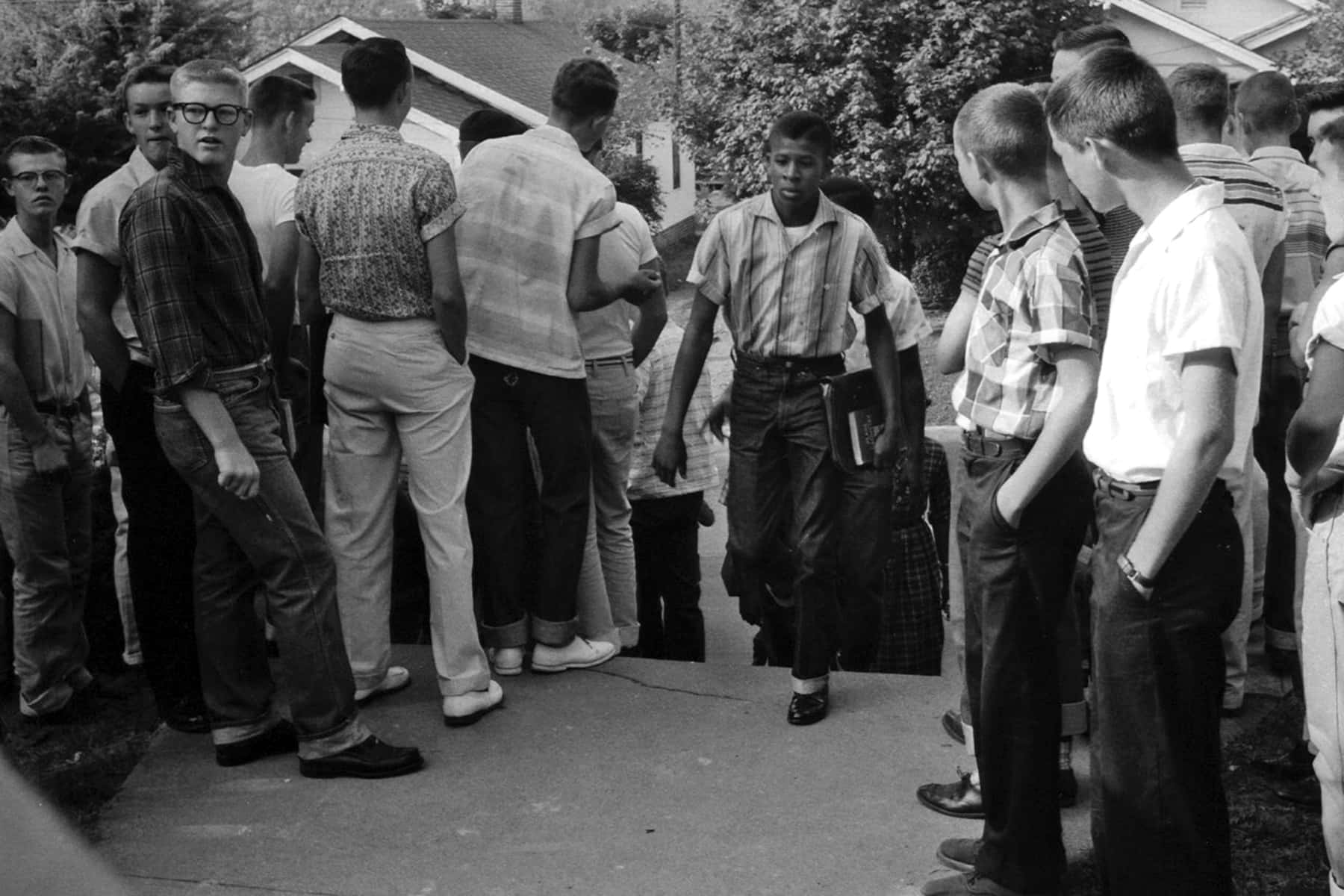
“By the 1960s, black poverty was deeply entrenched, but more importantly, it was marked by its stark contrast to the white middle class’s prosperity. Not only had the majority of blacks not ridden the postwar economic boom; conditions in the ghetto had actually worsened. Almost half of black children lived in poverty in contrast with only 9 percent of white children. Black families had less than one-fifth the wealth of white families. A Federal Reserve study concluded that the source of the wealth gap was historic inequalities in income and opportunities, “a legacy of past economic deprivation,” which would not be fixed even if the income gap were eliminated. The study held that it could only be closed by a reversal of past privileges.” – Mehrsa Baradaran, “The Color of Money: Black Banks and the Racial Wealth Gap”
Americans have been told that the goal of the Civil Rights Movement was integration. Nothing could be further from the truth. The goal was to eliminate legal Jim Crow “Apartheid” segregation.
The famous Brown v. Board Supreme Court decision in 1954 was not about a desire to integrate. Linda Brown’s parents were upset that she was forced to go to a school that was four miles away when there was one four blocks from their home. They actually thought the segregated school she attended was great. The Black teachers nurtured and challenged their students in a way that the White teachers they would have later never did. Linda Brown later questioned her parents decision when she looked back on the passage of forty years since the court decision.
“Sometimes I wonder if we really did the children and the nation a favor by taking this case to the Supreme Court. I know it was the right thing for my father and mother to do then, but after nearly 40 years we find the Court’s ruling unfulfilled.”
Despite what most of us were taught in school, America handed us an empty platter labeled “integration.” This empty platter was an extension of centuries of racial discrimination that continued even though the federal government passed legislation that was supposed to end it in the 1960s.
One of the biggest tricks played on Black America was a bait and switch that allowed us to think we were getting one thing while receiving something altogether different. The myth of integration posits that, White people who had shown for centuries that they had no real desire to treat Black people fairly, and certainly did not want Black neighbors or Black classmates for their children, somehow want to integrate with us.
Segregation was more than just residential apartheid. It choked and continues to stifle Black economic advancement. What many refer to as a wealth gap is a misnomer. It is like calling the Grand Canyon a small crack in the ground. Their is a wealth chasm that is growing wider every day.
“Today, black families have an average net wealth of $11,000 compared to a white family’s average of $141,900. Pew data reveals that white families have thirteen times more wealth than black families. The wealth gap exists at every income and education level. On average, white families with college degrees have over $300,000 more wealth than black families with college degrees. A third of black families have no assets at all. Moreover, studies reveal that the gap is accelerating — over the last thirty years, the average wealth of white families has grown at three times the rate for average black families.”– “The Color of Money: Black Banks and the Racial Wealth Gap”
By the time some Civil Rights leaders realized the fallacy of integration as a solution to our ills it was too late.
“If a man is broke and hungry, he needs bread and money, not [to] sit down beside a white man.” – Floyd McKissick director of the Congress of Racial Equality (CORE)
“We should begin with the basic fact that black Americans have two problems: they are poor and they are black. But integration speaks not at all to the problem of poverty, only to the problem of blackness.” – Stokely Carmichael
One of the greatest failures of the Civil Rights Movement was that its’ leaders realized too late that defeating Jim Crow in the South did nothing for the millions of Blacks that had escaped Jim Crow by moving to the ghettos of the North. They were unwelcome newcomers on arrival and Whites in Milwaukee, Detroit, Chicago, Cleveland, Los Angeles, New York and many other cities did everything in their power to keep Black people as far away from them as possible.
The civil unrest that broke out in Watts, Detroit, Milwaukee, Washington DC, Newark and dozens of other cities was a pushback to the Jim Crow of the north. Blacks had hoped to take advantage of their escape from discrimination in the South to live the American Dream in the North, but discovered an American nightmare. Even Dr. King realized this.
Mehrsa Baradaran, in her excellent book The Color of Money, told us about Dr. King realizing the error of his ways later as he looked back at his famous dream at the March on Washington.“In a 1965 sermon called ‘The American Dream,’ he offered a more realistic sequel to the famous Dream speech. He revisited his dream metaphor at Ebenezer Baptist Church, but this time with much less publicity and fanfare. And the dream had changed.”
“About two years ago now … I tried to tell the nation about a dream I had. I must confess to you this morning that since that sweltering August afternoon in 1963, my dream has often turned into a nightmare; I’ve seen it shattered.… I continue to see it shattered as I walk through the Harlems of our nation and see sometimes ten and fifteen Negroes trying to live in one or two rooms. I’ve been down to the Delta of Mississippi since then, and I’ve seen my dream shattered… I’ve seen my dream shattered as I’ve walked the streets of Chicago and seen Negroes, young men and women, with a sense of utter hopelessness because they can’t find any jobs. And they see life as a long and desolate corridor with no exit signs.”
The Report of the National Advisory Commission on Civil Disorders (more commonly known as the Kerner Commission Report) was released on February 29, 1968. It was an attempt to explain the explosions known by most as the “ghetto riots” of the 1960s. The most famous line from the report stated something that was obvious to Black people, but was soundly rejected by most Whites including President Lyndon Johnson who had commissioned the report.
“What White Americans have never fully understood — but what the Negro can never forget — is that White society is deeply implicated in the ghetto. White institutions created it, white institutions maintain it, and White society condones it.”
What most are unaware of, is that the first draft of the report was titled, The Harvest of American Racism. It dismissed Johnson’s Great Society programs as “tokenism.” Johnson immediately fired all 120 social scientists who had worked tirelessly to complete the report. One of the original researchers later found a copy in an archive with the word “Destroy” stamped on the cover page. This is part of what that report said about the causes of the unrest.
“Five years ago racism in America was widely regarded as a Southern problem; today it has become evident that racism is a national problem. In degrees of greater or less intensity, it is manifest in a substantial majority of the white population. It pervades our major institutions — some to a greater extent than others — and is one of the chief determinants of action in the society, economy, and polity. For Negroes it is an ever-present force, a fact of daily life that infuriates, annoys, humiliates, and harasses. There is no need here to offer proof that Negroes in America — North and South — are second-class citizens in fact, if not in law. Common sense observation and hundreds of volumes on the subject make that abundantly clear… In a democratic society with a racist majority, racism infuses politics as it does other spheres of action… The focus of Negro antagonism in the riots is white authority and white property: mainly the police and white stores. Their antagonism is directed at white dominance over Negroes rather than at white people per se. The impulse toward indiscriminate attacks on whites has been notably absent. In only one of the riots examined has a white civilian been killed by a Negro rioter; of the few police officers and firemen have only one of them unquestionably been killed by Negroes… For Negro participants the riots represented an effort to break in the door of American society, not to burn down the house… token concessions, providing small poverty grants, investigating a few complaints of police brutality, promising a few more jobs… can be expected over the next years to increase the sense of injustice… First, only a small number of people directly benefit from “token” concessions. What about all those people who do not get those small number of jobs generally provided through poverty or temporary employment programs? Secondly, the fact that whites are basically more concerned about making the Negro problem go away than in really doing something about Negro problems has led to a breaking of promises many Negroes have been given… ‘Oh yes, we are working on it, but these things take time,’ becomes a dominant motif of white actions. But promises made and promises then broken become a basis for frustrated disappointment and a sense of betrayal… The reality of millions of ghetto youth is discrimination, arbitrary police practice, lack of skills, low employment, and tremendous uncertainties as to whether there is a place for them within the white-dominated economy that influences so much of their lives.”
Those same words could easily be written today and be just as true. Most of the time when civil unrest breaks out in Black communities you hear the same things the report complained about, token gestures which lead to more frustration.
The second version, The Report of the National Advisory Commission on Civil Disorders, was much less harsh and not nearly as honest and it still angered President Johnson. He refused to invite the commissioners to the White House and ignored almost all of their recommendations. He sunk billions into the Vietnam War instead of dealing with the powder keg right here in America. It would be his undoing.
The three big pieces of legislation by the federal government in the 1960s are routinely defined as bringing America into a post racial state. Baradaran tells us the fallacy of this approach.
“Abolishing racist laws was not the same thing as achieving equality. Ending segregation was not the same thing as integration. Ending job discrimination was not the same thing as having jobs. Ending credit discrimination was not the same thing as providing credit. A legal right to equality was meaningless to the destitute and marginalized unless it could open a path to actual equality.”
The Voting Rights Act, which was watered down to begin with, has been made more or less null and void by the U.S. Supreme Court. The Civil Rights Act of 1968 included Title VIII, known by most as the Fair Housing Act. It was written with diluted language requiring the federal government to “affirmatively further fair housing.”
“The Secretary of Housing and Urban Development shall… administer the programs and activities relating to housing and urban development in a manner affirmatively to further the policies of this title.”
It has never been even marginally enforced. So two of the biggest laws in the nation’s history, are basically useless today in achieving a level playing field after Jim Crow was supposedly killed by these laws.
Jim Crow is alive and well. He’s taken off his old uniform and looks like a colorblind version of himself. Our schools are more segregated than they were in 1970. Housing discrimination continues unabated. The Black homeownership rate is barely three points higher today than it was in 1968 (41.3% vs 44%). In Milwaukee the Black homeownership rate is only 27%. The Black unemployment rate nationwide is consistently at least double the White rate.
There have been some positive changes, that many call progress. Economic and career progress for some in our community, masks the underlying issues for the masses. Racism is alive and well as the four years under President Trump made manifestly clear. Unarmed Black men, women and children are being killed by police on a regular basis and those protesting police brutality continue to be brutalized by the police just like they were in the 1950s and 60s. We’ve come a long was since the days of Jim Crow but that does not equate with real substantial progress in my assessment. I always need to see more.
In many ways we are moving backwards. The Republican Party, under Nixon launched a Southern Strategy to encourage Whites in the South to switch their long allegiance to the Democratic Party, has maintained that status. President Ronald Reagan, followed in the footsteps of Nixon using an appeal to White racism and set the stage for the rise of the Tea Party, Donald Trump and the current GOP at the federal and state level.
The GOP is at the forefront of dismantling voting rights which were hard earned with literal blood, sweat and tears. Whites across the country keep electing those who are killing any chance of racial reconciliation, because still, far too many of them have no desire to reconcile with people of color. The increase in interracial marriages and relationships is a sign of what America would be in a post racial state.
The message of integration for many was a pipe dream that distracted us from seeing clearly that the roots of the American tree are tarnished with racism. When White people in Milwaukee County wrote racial restrictive covenants to keep those they defined as not white out, they were honestly telling us how they felt about the fantasy of integration. Here are a few examples.
“No Persons other than the white race shall own or occupy any building on said tract, but this covenant shall not prevent occupancy of persons of a race other than the white race who are domestic servants of the owner or occupant of said buildings.” (Crestview Acres 12 subdivision, Greendale, recorded July 29, 1958)
“At no time shall the land included in Washington Highlands or any part thereof, or any building thereon be purchased, owned, leased or occupied by any person other than of white race. This prohibition is not intended to include domestic servants while employed by the owner or occupied by and [sic] land included in the tract.” (Washington Highlands subdivision, Wauwatosa, May 6, 1919)
“Only members of the Caucasian race shall use or occupy any dwelling in said tract, except that this covenant shall not prevent occupancy by domestic servants of a different race or nationality employed by an owner or tenant.” (Boulder Lane Park subdivision, Hales Corners, Feb. 10, 1939)
Is it surprising now that these communities are still a part of the most segregated metropolitan area in the country?
Integration is a two way street in our minds. However, it has always been a one way street in America. It is about time we ask ourselves why that is still the case. The ills of the communities left out of the American Dream are the responsibility of the nation.
When you leave people to fend for themselves on one side of the fence, while giving billions of dollars to those on the other side of the fence for generations, you are left with what we have today in America. The Kerner Commission Report said:
“This is our basic conclusion: Our nation is moving toward two societies, one black, one white–separate and unequal.”
Despite the movement of many Blacks into the middle and upper classes, that progress is built on unstable ground. One half of all Black wealth in the country was wiped out by the Great Recession. Our community has still not recovered from the intentional discrimination by banks and other lenders which tricked millions into getting subprime second mortgage loans, not first mortgages as most believe. A huge number of these Black and Hispanic borrowers were eligible for prime loans. They were given more expensive, dangerous subprime loans out of sheer greed and racism.
Baradaran explains how this happened.
“After years of being a banking desert, as barren as Death Valley itself, the ghetto became a hub for casinos. The black population found itself courted by, or more accurately targeted by, subprime lenders. Just as contract sellers had exploited the credit-starved and redlined ghettos, once again, high-priced lenders filled the void. High-interest mortgages were made legal by Congress and the courts, who, guided by the ethos that fewer government regulations would produce a healthier banking industry, lifted caps on interest rates. The 1980 Depository Institutions Deregulation and Monetary Control Act (DIDMCA), the 1982 Garn-St. Germain Depository Institutions Act, and other deregulatory legislation paved the way for subprime loans, and the 1978 Supreme Court case Marquette National Bank v. First of Omaha made state usury laws practically ineffectual, leading to a steady rise in interest rates.”
There were at least 60 subprime lenders that descended on Milwaukee during this feeding frenzy. Homeowners who had long ago paid off their homes, lost them as the artificially created bubble burst. They were blamed for the housing market crash. They received no sympathy, empathy or significant assistance from those who clearly knew they had been victimized.
The true extent of the predatory nature of this lending is clear. “A HUD study found that subprime loans were five times more likely in black neighborhoods than in white ones between 1993 and 1998. In other words, “high-cost subprime lending accounted for 51% of home loans” in black neighborhoods, versus only 9 percent in white ones. Moreover, “homeowners in high income black neighborhoods [were] twice as likely as homeowners in low income white neighborhoods to have subprime loans” according to “The Color of Money.” These practices in the 1990s, were a test drive preparing for the 2000s when the real damage was done.
Integration was supposed to level the playing field. The battle is not over and we must admit that integration is a pipe dream until White Americans in masse, challenge their leaders to make it real. People of color do not have that power. It is not our responsibility to make America do right. We’ve brought the nation this far, with most major legislation related to fairness coming from the efforts of people of color that have pushed back against marginalization.
“There is still time for one nation to make a concerted attack on the racism that persists in its midst. If not, then Negro youth will continue to attack white racism on their own. The harvest of racism will be the end of the American dream.” – The Harvest of American Racism
© Photo
Library of Congress


